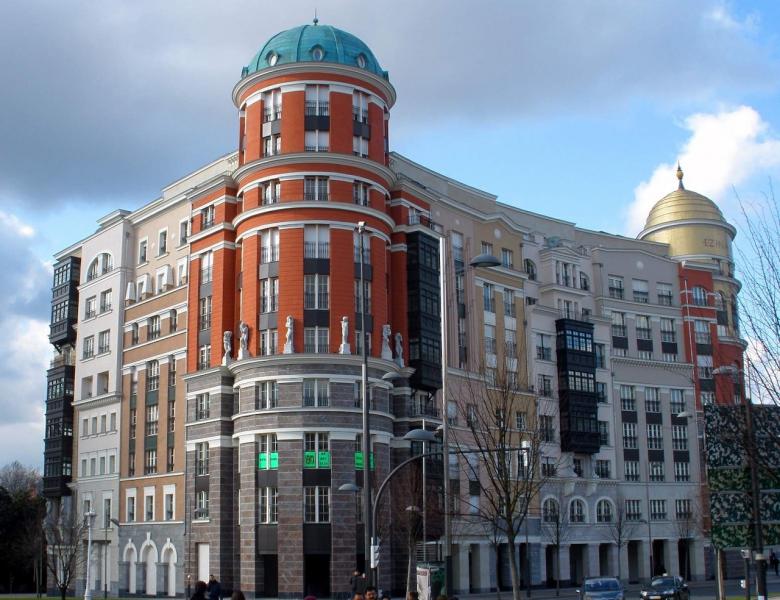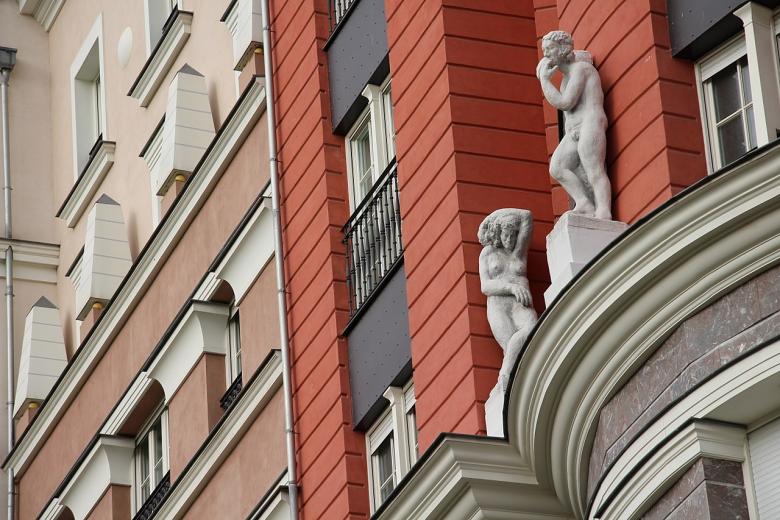Rob Krier, 1938–2023
John Hill
22. November 2023
The Artklass Building (2011) in Bilbao, Spain, by Rob Krier with Nada and Mark Breitman (Photo: Zarateman/Wikimedia Commons)
Rob Krier, the influential architect, author, and sculptor who was born in Luxembourg and spent much of his life in Germany, has died at the age of 85.
It is difficult to speak or write about Rob Krier without also mentioning his brother Leon, who, like his older brother of eight years, is also an architect and is a strong proponent of New Urbanism and traditional architecture. One could say decrying modern architecture and urbanism was their lives' passions; their buildings, books, master plans, and other creations served as alternatives to modernism, grounded as they were in traditional values and forms.
The Kriers are both recipients of the Richard H. Driehaus Prize, given out annually by the University of Notre Dame School of Architecture to practitioners of contemporary traditional and classical architecture. Leon was a laureate in 2003, when he was in his mid-50s, while Rob won in 2022, at the age of 84. Rob actually mentions, in his Driehaus acceptance speech, below, that such a prize would be more fitting for a younger professional rather than someone of his age; for him, the prize then was “a beautiful end of my architectural career.”
Following schooling at Lycée Classique in Echternach, Luxembourg, Krier went to Germany and studied architecture at the Technical University of Munich. He graduated in 1964, after which he worked for Oswald Mathias Ungers in Cologne and Berlin, and Frei Otto in Berlin and Stuttgart. He worked for various other architects in Stuttgart and taught at Stuttgart University in the first half of the 1970s, a period that culminated in the 1975 publication of Stadtraum in Theorie und Praxis. Translated into English as Urban Space in 1979, the book espousing traditional urban squares and streets over modernist planning was enormously influential and brought him worldwide attention.
In 1976, Krier moved to and opened a practice in Vienna, where he would also teach and serve as Head of the Institute for Design at the Vienna University of Technology. Although he was based in Vienna for about twenty years, it was not the most rewarding time or setting for his efforts; he recounted in the recently published two-volume monograph on his career that he “only accomplished a small number of projects in Vienna.” More fruitful were the two offices he opened near the end of his Viennese tenure: one in Montpellier, France, in partnership with Nicolas Lebunetel; and one in Berlin with Christoph Kohl, his son-in-law. Notable projects with Kohl included Kirchsteigfeld, the master plan for a new town for around 10,000 inhabitants in Potsdam, and Brandevoort, a residential district for twice as many residents in Helmond, Netherlands.
Detail of the Artklass Building showing Krier's sculptures on the facade (Photo: Fred Romero/Flickr)
Krier's partnerships with Lebunetel and Kohl ended in 2004 and 2010, respectively. Much of Krier's time since was taken up with figural sculptures, many of them surrounding him in the Driehaus video above. A work of architecture that is notable for fusing his architecture and sculpture is the Artklass Building, a residential block in Bilbao, Spain, that he worked on with Parisian architects and fellow Driehaus laureates Nada and Mark Breitman. Krier's sculptures serve as caryatids, appearing to prop up projecting bays and standing freely across the facades. Completed in 2011, it is one of the last buildings designed by Krier, if not the last one; the inclusion of his sculptures on it makes the building yet another “beautiful end” to his long career.

